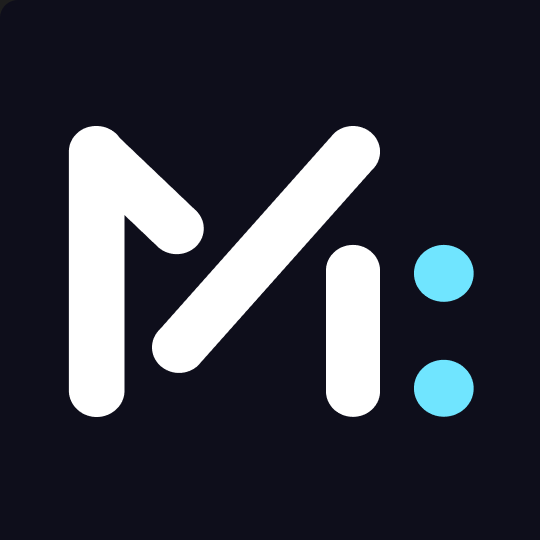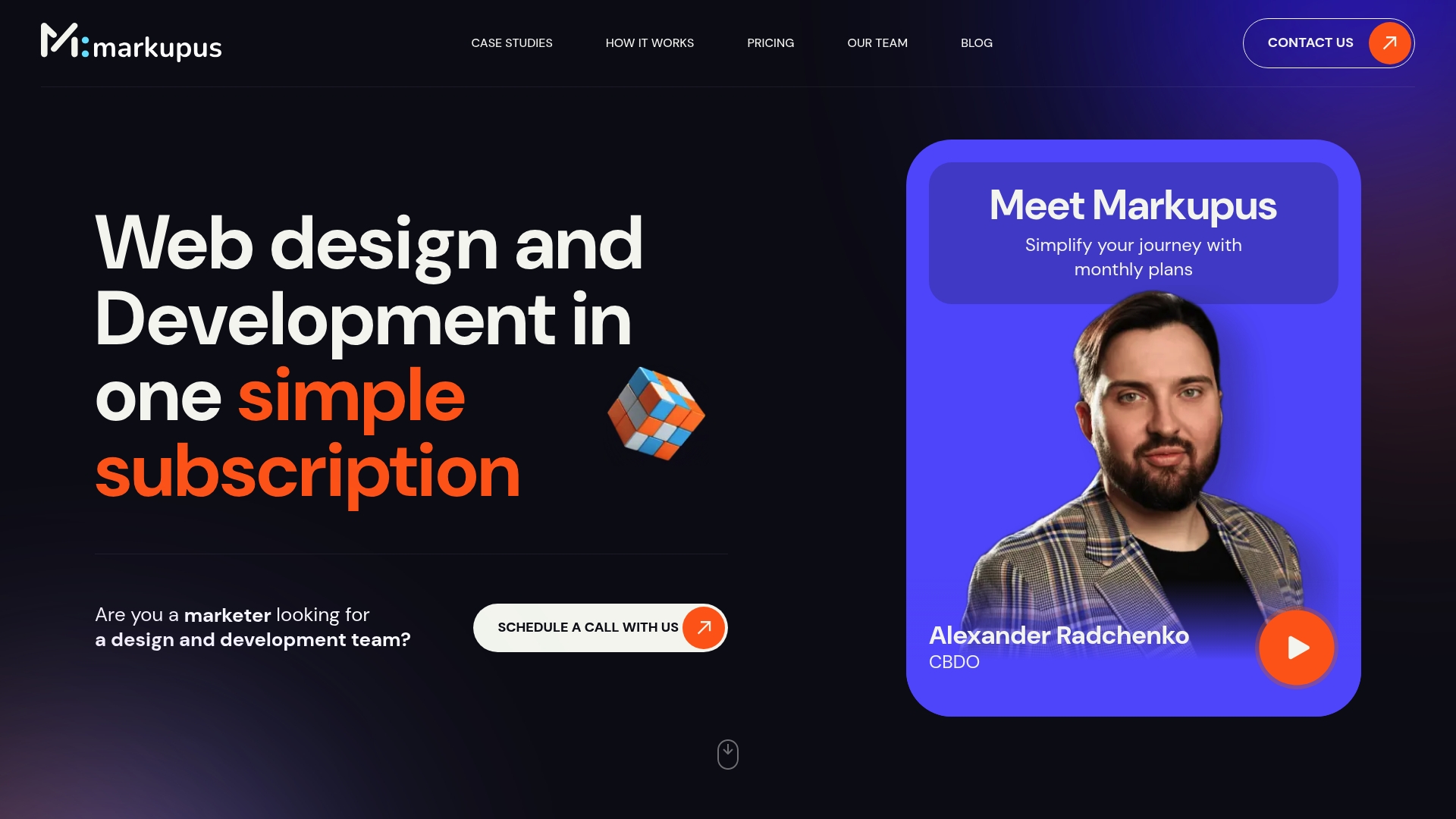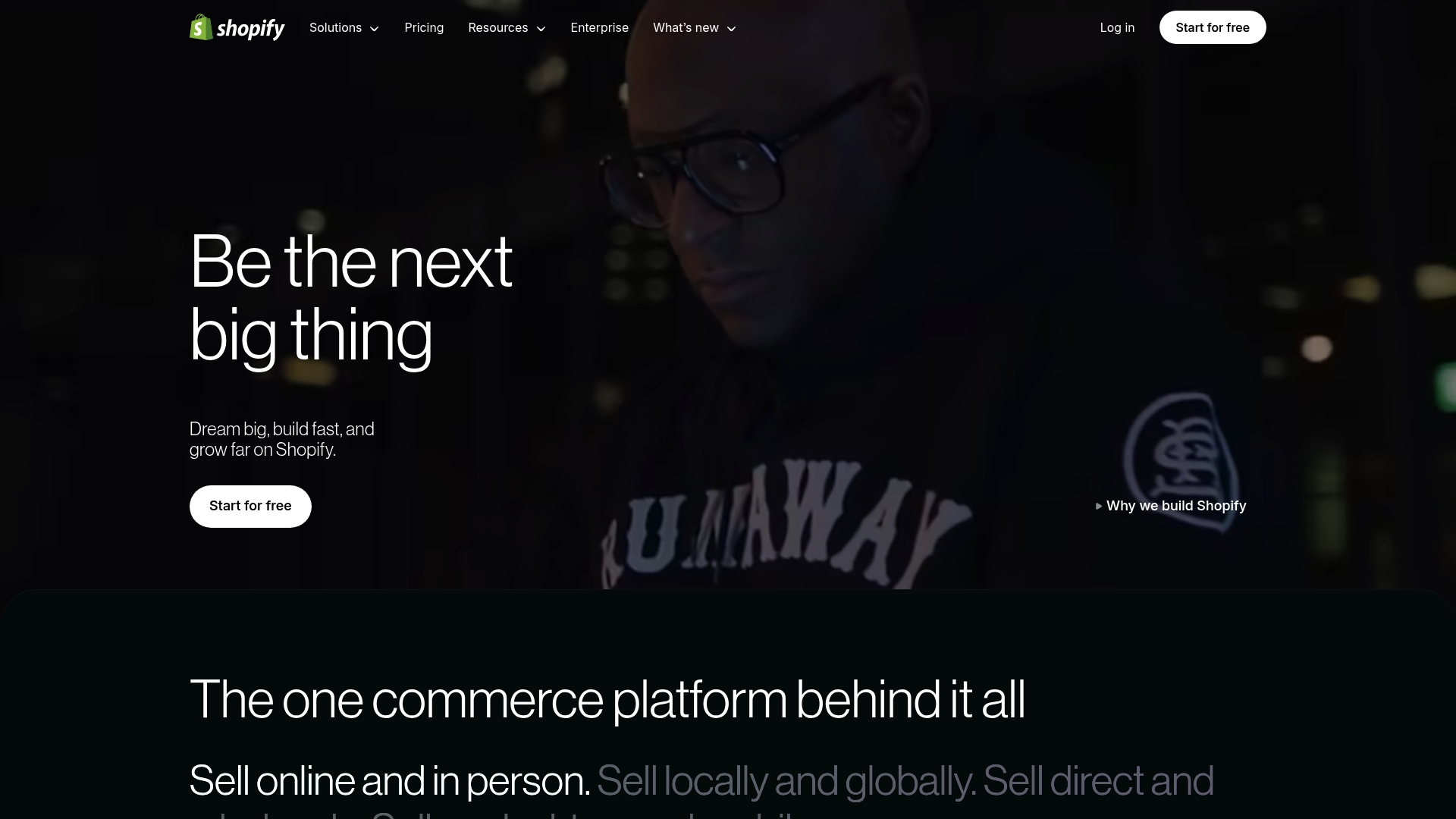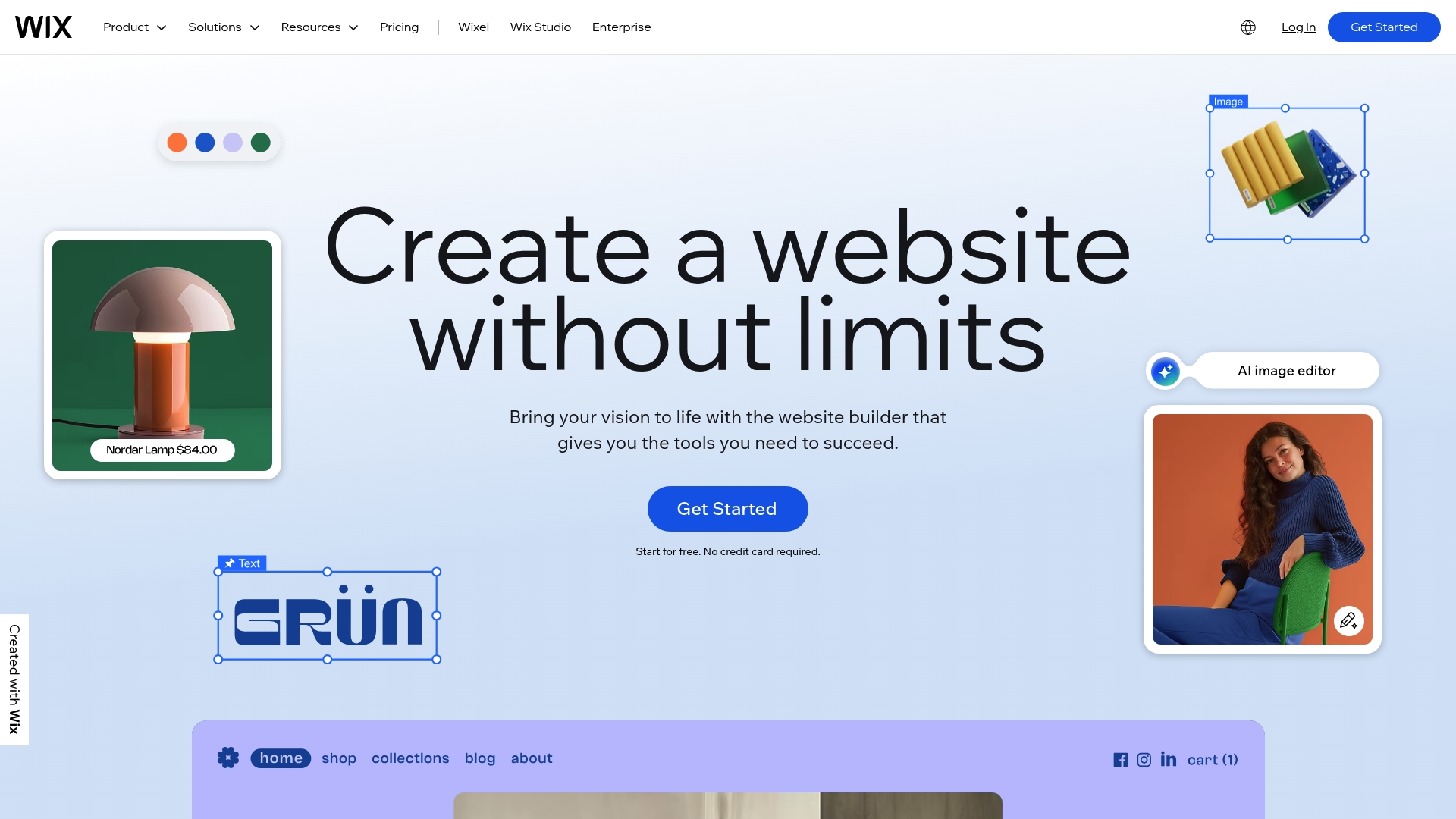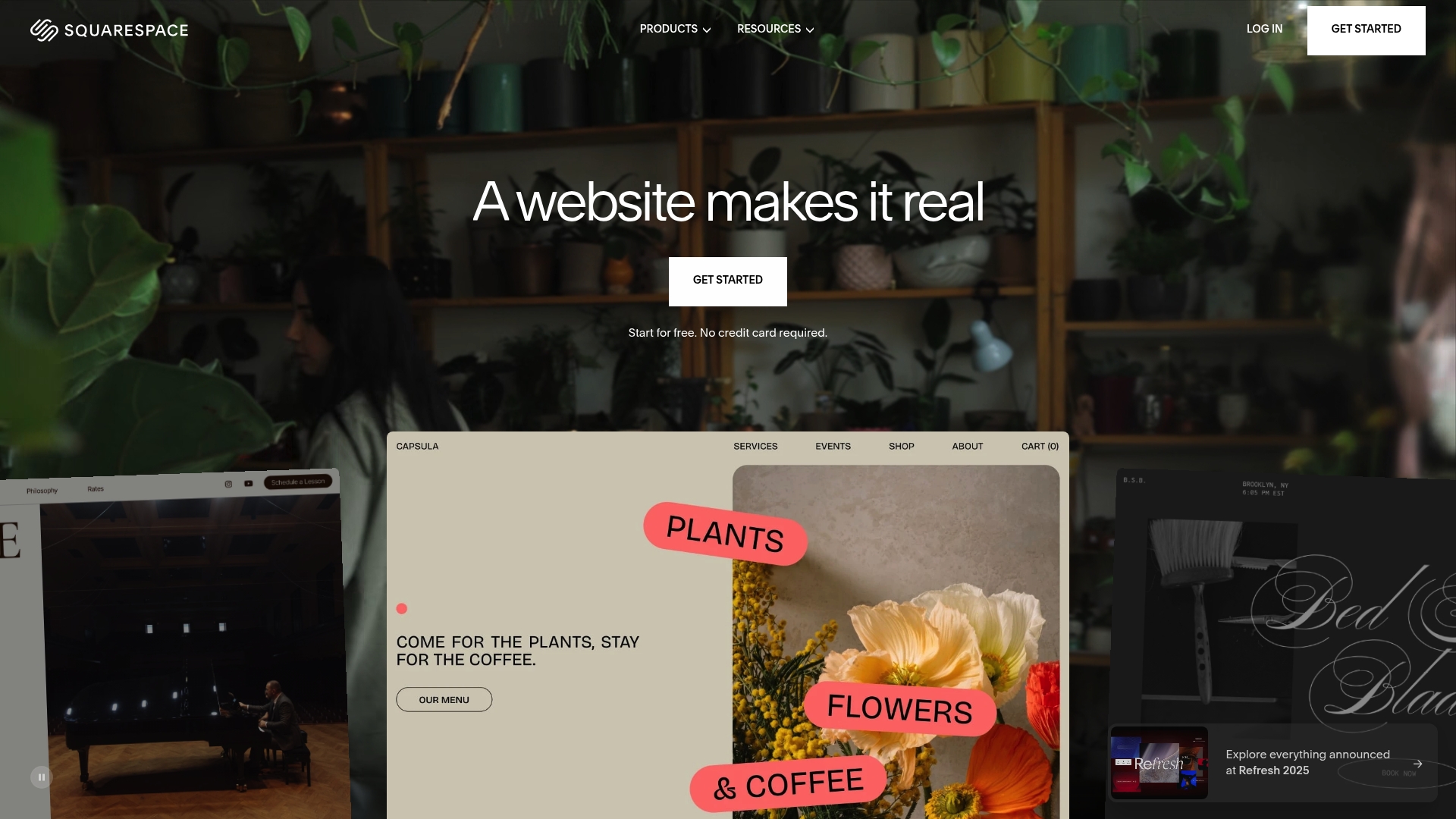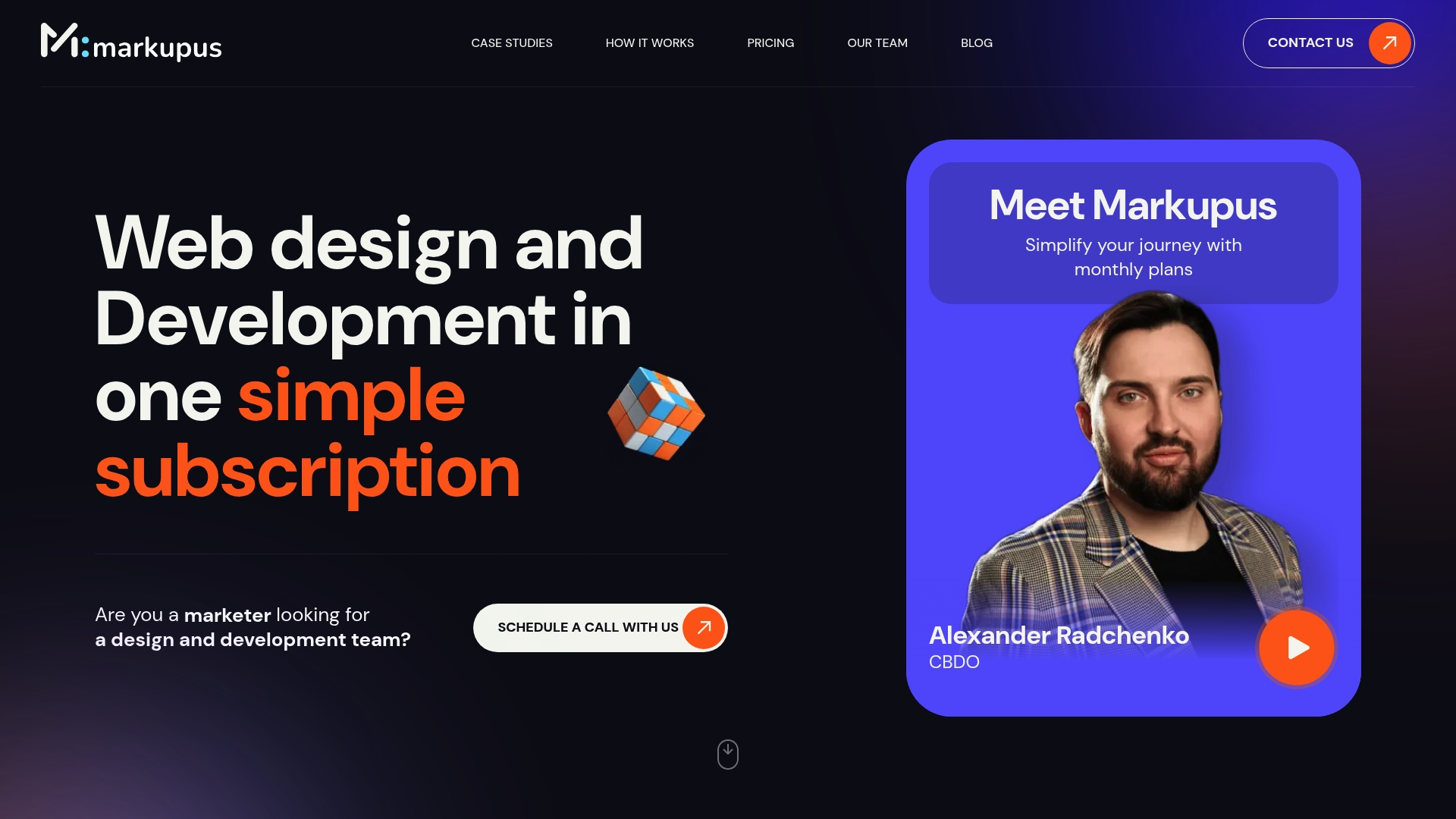Building an impressive online presence used to mean searching for the perfect mix of design, flexibility, and support. Now fresh tools and creative platforms promise more than simple websites. Some offer the comfort of guided design while others hand over the keys to advanced automation or seamless selling. Each takes a different approach to helping your business stand out, connect with customers, and grow on your terms. Curious how each one tries to deliver something special? The differences might surprise you.
Table of Contents
Markupus
At a Glance
Markupus is a subscription-first web design and development agency built for startups, SaaS companies, and e-commerce teams that need reliable, ongoing site support. Its predictable monthly plans combine dedicated project management, continuous optimization, and bespoke development work—so you get a long-term partner, not a one-off vendor. For teams that value stability, fast iteration, and modern tech, Markupus delivers both strategic support and hands-on execution.
Core Features
Markupus offers subscription-based web design and development services with flexible monthly plans that scale in hours and scope. Each engagement includes a dedicated project manager and expert support, plus website performance optimization and routine maintenance. The team delivers custom integrations with CRMs and email marketing platforms and powers automations using n8n to stitch workflows together. Markupus also builds AI agents and leverages modern stacks—ReactJS and NextJs—while using modern LLMs such as Open AI and Claude to add intelligent features and automation, with a particular focus on e-commerce design and development.
Pros
- Reliable team with personalized support: every plan includes dedicated project management so your requests don’t get lost in a ticket queue.
- Flexible and predictable pricing plans: subscription billing makes budgeting straightforward and reduces scope creep on ongoing work.
- Dedicated project management and expert support: teams get a single point of contact who understands the product roadmap and priorities.
- Ability to upgrade, downgrade, or pause plans as needed: the subscription model adapts to seasonal demand or runway changes.
- Experienced team with positive client reviews: the delivery focus is on consistent quality and measurable performance improvements.
Who It’s For
Markupus is tailored to businesses and marketers who need a dependable, ongoing web partner rather than a one-off agency. Ideal users include early-stage startups needing regular feature work, SaaS owners who must keep messaging and landing pages optimized, and e-commerce teams that require continuous A/B testing, integration work, and performance tuning. If you need predictable cost models and a dedicated technical team, Markupus fits naturally into your operations.
Unique Value Proposition
Markupus’s strength is the combination of subscription predictability, deep technical execution, and modern automation and AI capabilities. Unlike traditional agencies that bill per project, Markupus aligns with product cycles: continuous updates, quick experiments, and continual performance optimization. Their use of ReactJS and NextJs produces fast, SEO-friendly front ends, while n8n automations and custom AI agents—powered by modern LLMs like Open AI and Claude—enable intelligent personalization, automated workflows, and rapid integrations with CRMs and marketing tools. That stack and service model reduce time-to-market for new features and make technical debt easier to manage. In short: you get a development partner that blends engineering rigor with growth-focused marketing support—faster iterations, fewer surprises, better ROI.
Real World Use Case
A startup chooses the medium subscription for ongoing enhancements: the dedicated team implements new product pages, integrates the marketing CRM, automates lead routing with n8n, and builds an AI-driven content assistant to streamline copy updates. Over three months, landing page speed and conversion-focused experiments improve user engagement while the roadmap stays on schedule thanks to the dedicated PM.
Pricing
Starting at €149/mo, with plans that scale up to €4995/mo depending on hours and included services.
Website: https://markupus.com
Shopify
At a Glance
Shopify is an all-in-one commerce platform designed to help independent business owners start, run, and grow online and in-store. It centralizes store building, inventory, payments, shipping, and marketing into one interface while supporting multi-channel selling across web, mobile, social, and physical locations. The platform’s strength is its completeness and ecosystem; the trade-offs are cost at scale and occasional technical customization needs.
Core Features
Shopify lets you create and customize online stores with theme-driven design and a customizable checkout experience (Shopify Checkout). It supports selling across multiple channels — web, mobile, social media, and brick-and-mortar — and provides tools to manage products, inventory, payments, and shipping from a single dashboard. You can create, execute, and analyze marketing campaigns within the platform, and extend functionality through apps, APIs, and developer tools.
Pros
- All-in-one commerce workflow: Shopify combines storefront, payments, inventory, and shipping management in one place so you don’t stitch together multiple systems.
- Multi-channel selling made practical: You can sell on your website, social channels, mobile, and in-person with consistent inventory and order management.
- Robust support and innovations: The platform includes ongoing product innovation and support — including AI-driven tools — to help you scale and automate routine tasks.
- Scalable plan options: A wide range of pricing tiers make it possible to start small and grow into more advanced plans as your needs expand.
- Large developer ecosystem: Apps, APIs, and developer tools let you extend the platform for custom workflows or complex integrations.
Cons
- Cost can escalate: At higher-tier plans or when you add multiple paid apps, total monthly costs can rise quickly and impact margins.
- Transaction fees outside Shopify Payments: If you don’t use Shopify Payments, transaction fees may apply and add recurring expense to sales.
- Customization may require expertise: Some advanced customizations and integrations need technical skill or developer resources to implement correctly.
Who It’s For
Shopify is ideal for small to medium-sized businesses, entrepreneurs, and enterprises that need a scalable, centralized commerce platform. If you sell across multiple channels, plan to scale inventory and fulfillment, or want a supported platform with an extensive app ecosystem, Shopify is a strong fit. If you’re budget-sensitive or prefer zero technical overhead, prepare to balance features against cost.
Unique Value Proposition
Shopify’s unique value is its comprehensive, integrated approach: one platform that covers storefronts, checkout, payments, and multi-channel sales while giving you developer extensibility and marketplace integrations. That combination shortens setup time and centralizes operations for growing merchants.
Real World Use Case
A maker launching an organic candles and skincare line can use Shopify to build a storefront, sell at local markets with POS, manage inventory centrally, and run social-media campaigns — all while tracking orders and payments in one place. Megan Bre Camp’s example shows how a small brand can scale online and offline sales using Shopify’s tools.
Pricing
Starting at $29 USD/month for Basic, $79 USD/month for Shopify, and $299 USD/month for Advanced, with a free trial available and higher-tier options for larger businesses.
Website: https://shopify.com
Wix
At a Glance
Wix is a drag-and-drop website builder that packages AI-driven creation, e-commerce tools, hosting, and built-in marketing features into a single platform. It’s designed to get professional sites live quickly—no coding required—and it includes 900+ templates and AI assistance for images and content. For businesses that value speed, simplicity, and integrated services, Wix delivers a pragmatic, reliable option. If you need pixel-perfect custom code or deep back-end control, expect some trade-offs.
Core Features
Wix centers on an intuitive drag-and-drop editor and an AI website builder that accelerates initial setup. The platform offers 900+ customizable templates across industries, built-in AI tools for image generation, content suggestions, and marketing automation, plus integrated e-commerce to manage products, orders, and shipping. Wix also provides domain registration, hosting, and on-site SEO and marketing tools so you can launch and grow from one dashboard.
Pros
- Beginner-friendly interface: The drag-and-drop editor makes building and editing pages straightforward for non-technical users.
- Large template library: With over 900 templates, you can find industry-specific starting points that reduce design time.
- All-in-one platform: Hosting, domains, SEO, and marketing tools are bundled, lowering the need to stitch multiple services together.
- No coding required: You can create functional websites and online stores without hiring developers.
- Reliable hosting and security: Wix handles hosting and platform-level security so you don’t need to manage infrastructure yourself.
Cons
- Design flexibility is limited compared to custom-coded sites: Advanced layouts and unconventional interactions may be difficult or impossible to implement without workarounds.
- Some key features sit behind premium plans: You may need to upgrade to access advanced e-commerce, marketing, or commerce-related capabilities.
- Advanced customization can require coding or hitting platform limits: When projects demand bespoke back-end integrations or highly specific UX behavior, Wix can become restrictive.
Who It’s For
Wix suits individuals, freelancers, and small to medium-sized businesses that need a fast, low-friction route to a polished online presence. If you manage marketing, product listings, or content and prefer a single dashboard for hosting, domains, and promotions, Wix keeps operational overhead low. It’s not the ideal choice for enterprises or teams that require extensive custom engineering or platform-level extensibility.
Unique Value Proposition
Wix’s strength is consolidation: AI-assisted site creation, a massive template library, and built-in hosting/marketing tools make it possible to design, launch, and promote a site without coordinating multiple vendors. For teams that prioritize speed-to-market and self-service control over deep technical customization, Wix offers a compelling, time-saving proposition.
Real World Use Case
A local boutique used Wix to open an online store, leveraging e-commerce templates, AI customization for product imagery and descriptions, and integrated payments and marketing tools to attract shoppers. The boutique scaled online orders while managing inventory and promotions from one platform—reducing time spent on technical setup and increasing focus on merchandising.
Pricing
Plans start from $17/month with the Light plan and scale up to $159/month for the Business Elite plan, with multiple tiers to match different business needs.
Website: https://wix.com
BigCommerce
At a Glance
BigCommerce is an open SaaS ecommerce platform built for mid-market and enterprise brands that need scale, security, and flexibility. It supports both B2B and B2C models and combines hosted low/no-code and headless deployment options, so you can move fast or architect for performance. Expect a platform that prioritizes international growth, multistorefront management, and strong partner integrations — but be prepared for a B2B/enterprise feature set that can feel heavy for smaller teams. Bottom line: powerful and enterprise-ready, with a steeper setup curve for smaller merchants.
Core Features
BigCommerce bundles a broad set of capabilities: hosted low/no-code and headless options, multistorefront management, international expansion tools, and advanced B2B functionality on enterprise plans. It includes omnichannel feed and data transformation via Feedonomics, Catalyst for fast storefront creation, localized experiences for global markets, and enhanced buyer portals with native functionality. The platform also exposes extensive partner integrations, apps, and a rich library of articles, guides, webinars, reports, and podcasts to support implementation and growth.
Pros
- Comprehensive ecommerce features for both B2B and B2C: BigCommerce provides functionality that addresses complex wholesale workflows as well as consumer storefronts in one platform.
- High scalability suitable for enterprise businesses: The architecture and enterprise services are built to support large catalogs, multiple storefronts, and cross-border operations.
- Strong security and compliance standards: The platform delivers enterprise-grade security controls and compliance posture appropriate for mid-market and larger merchants.
- Wide range of professional support and services: Expert support and professional services help teams implement complex integrations and customizations.
- Powerful integrations including Feedonomics for omnichannel management: Native and partner integrations simplify data feeds, channel syndication, and global commerce flows.
Cons
- Pricing details are customized and require a request for a quote: There is no simple public price point, which makes budgeting upfront more difficult for many teams.
- Potential complexity for small or new businesses due to extensive enterprise features: Smaller merchants may find the breadth of capabilities overwhelming or unnecessary for early-stage operations.
- Some advanced features may require technical expertise to implement: Headless setups, custom storefront work with Catalyst, and advanced B2B features often need developer resources or agency support.
Who It’s For
BigCommerce suits mid-market to enterprise ecommerce teams that need a scalable, secure platform with strong multi-store and international capabilities. If you manage multiple storefronts, sell B2B and B2C, or require deep integrations for omnichannel operations, this platform matches your needs. Smaller shops should evaluate implementation overhead carefully.
Unique Value Proposition
BigCommerce’s unique value is the combination of enterprise-grade ecommerce features with flexible deployment options — hosted, low-code, or headless — plus partner-led integrations like Feedonomics and Catalyst to accelerate launches while supporting complex commerce requirements.
Real World Use Case
A fashion retailer expanding globally can use BigCommerce to launch country-specific storefronts, operate B2B and B2C channels from one back end, and plug into partner integrations to streamline feeds, fulfillment, and localized experiences.
Pricing
Quote-based — Scalable enterprise plans with custom pricing; no additional transaction fees for enterprise plans. Request a quote for detailed pricing.
Website: https://bigcommerce.com
Squarespace
At a Glance
Squarespace is a polished, all-in-one website builder that helps businesses and creators launch professional sites without coding. It combines drag-and-drop editing, AI-assisted design, and built-in ecommerce and marketing tools into a single package. If you want a fast path to a visually consistent site with commerce and domain management handled for you, Squarespace is a solid choice. It’s especially well-suited to users who prioritize design and simplicity over deep code-level customization.
Core Features
Squarespace offers a drag-and-drop website builder alongside AI website-building tools and design intelligence to accelerate setup. The platform provides a library of professionally pre-designed templates tailored to various industries, integrated ecommerce capabilities for online store setup and payment processing, plus marketing tools like SEO, email campaigns, and social media integration. An extensions marketplace enables third-party integrations, and hosting, security, and domain management are bundled into the platform so you can manage everything in one place.
Simple. Beautiful. Managed.
Pros
- User-friendly interface with drag-and-drop editing: The editor makes layout changes and content updates quick and accessible even for non-technical users.
- AI-powered design and content generation tools: AI features speed initial site creation and help refine layouts and copy without starting from scratch.
- All-in-one platform with hosting, security, and domain management: Squarespace handles infrastructure concerns so you don’t need separate providers for hosting or SSL.
- Powerful marketing and ecommerce features: Built-in SEO, email campaigns, and payment processing support typical small business needs without adding plugins.
- Support for small businesses and professional service providers: Templates and booking or sales-focused features cater to freelancers, creatives, and service-based businesses.
Cons
- Pricing can be higher compared to other website builders for advanced features: Accessing advanced ecommerce tools or team features often requires stepping up to higher-priced plans.
- Limited customization options for advanced users who want to code: Developers seeking full control over HTML/CSS and backend behavior will find the platform restrictive.
- Some users might find the built-in templates restrictive for very unique website designs: If your brand needs a radically custom layout, templates can feel constraining and require creative workarounds.
Who It’s For
Squarespace is aimed at small to medium-sized business owners, entrepreneurs, freelancers, and creatives who want an easy-to-use platform that covers design, ecommerce, and marketing in one place. You’ll get the most value if you need a professional-looking site quickly and prefer managed services over handling hosting, security, and integrations yourself.
Unique Value Proposition
Squarespace’s strength lies in delivering beautifully designed templates and integrated tools—AI design, commerce, hosting, and marketing—so teams can focus on content and customers instead of technical maintenance. It’s the convenience of a boutique design studio packaged with the operational features businesses need.
Real World Use Case
A photographer can use Squarespace to build a portfolio, sell prints through the integrated store, and manage client bookings with built-in scheduling and commerce features—keeping galleries, sales, and domain all under one roof.
Pricing
Starting at $16/month after a free 14-day trial, with more advanced ecommerce plans available at higher prices; annual plans include one year of free custom domain registration.
Website: https://squarespace.com
Web and Ecommerce Platform Comparison
Below is a comparison of various web and ecommerce platforms, highlighting their key features, pros, cons, and pricing to help businesses make informed decisions.
| Platform | Key Features | Pros | Cons | Pricing |
|---|---|---|---|---|
| Markupus | Subscription-based web design & development, AI agents, CRM integration | Reliable support, predictable pricing, flexible plans, positive reviews | Limited to businesses needing ongoing support | €149 to €4995/month |
| Shopify | All-in-one commerce, multi-channel sales, payment integration | Comprehensive commerce tools, multi-channel selling, robust support | High costs at scale, transaction fees with external payments | $29 to $299/month |
| Wix | Drag-and-drop site builder, AI tools, 900+ templates, integrated hosting | Easy to use, extensive templates, all-in-one features | Limited advanced customization options | $17 to $159/month |
| BigCommerce | Open SaaS, multistorefront, B2B/B2C features, international expansion | Scalable for enterprises, strong integrations, enterprise-grade security | Complex for small businesses, quote-based pricing | Quote-based, no transaction fees |
| Squarespace | Drag-and-drop builder, AI design tools, ecommerce integration | User-friendly, AI-powered design, all-in-one platform, suitable for small businesses | Higher cost for advanced features, limited customization | $16/month and up |
Transform Your Ecommerce Website Into a Sales Powerhouse
Struggling to choose the right web design platform for your ecommerce business? If the expert comparison in this article left you concerned about slow site updates, patchwork integrations, or endless technical hurdles, you’re not alone. Many brands want a platform that’s not just fast and beautiful but also smart and adaptable as the ecommerce world evolves. Readers often mention pain points like unreliable site performance, limited automation, or a lack of true partnership when scaling digital storefronts.
Experience a smarter way to build and grow your online store with Markupus. Our team delivers custom web development, integrates n8n automations, and creates advanced AI agents using ReactJS and NextJs—making your store faster and more effective. Imagine launching changes quickly, automating your workflows, and getting hands-on support every step of the way. Ready to boost conversions and stay way ahead of ecommerce trends? Read more about how Markupus can transform your web experience at https://markupus.com.
Frequently Asked Questions
What features should I look for in ecommerce web design platforms?
When evaluating ecommerce web design platforms, prioritize features like ease of use, flexibility in design, integrated payment processing, and SEO tools. Start by listing your must-have features to ensure the platform aligns with your business needs.
How can I determine the best ecommerce web design platform for my needs?
To determine the best platform, assess your specific requirements, such as inventory management, marketing tools, and scalability. Create a comparison chart of features, pricing, and customer support options for each platform you’re considering.
What is the typical cost range for ecommerce web design platforms?
Costs for ecommerce web design platforms typically start around $29/month and can escalate based on features and scalability. Review your budget and consider projected growth to choose a plan that fits your financial strategy without compromising essential functionality.
How long does it take to build a website using ecommerce web design platforms?
Building an ecommerce website can take anywhere from a few days to several weeks, depending on the complexity and your familiarity with the platform. Set a timeline with milestones for content creation, design, and testing to ensure a smooth launch within your desired timeframe.
Can ecommerce web design platforms support mobile optimization?
Yes, most modern ecommerce web design platforms offer mobile optimization as a standard feature to enhance customer experience. Ensure you test the mobile view during development to confirm quick load times and functional layouts on smaller screens.
What types of businesses benefit most from using ecommerce web design platforms?
Ecommerce web design platforms are particularly beneficial for small to medium-sized businesses that seek scalability and ease of integration with payment and shipping services. Identify your growth plans to choose a platform that can effectively support your business model and expansion goals.
Recommended
- Blog | Design and Development Insights from Markupus
- Markupus Wins The Manifest Design Leader in 2024 Award | Markupus
- PremadeGFX | Case Study | Markupus
- Design And Development Subscription – New Trend? | Markupus
- Ecommerce Website Design: How to Create a Store That Sells – Appture Digital ~ 855 Get Bizz
- Top Ecommerce SEO Tips for 2025: Boost Traffic & Sales
